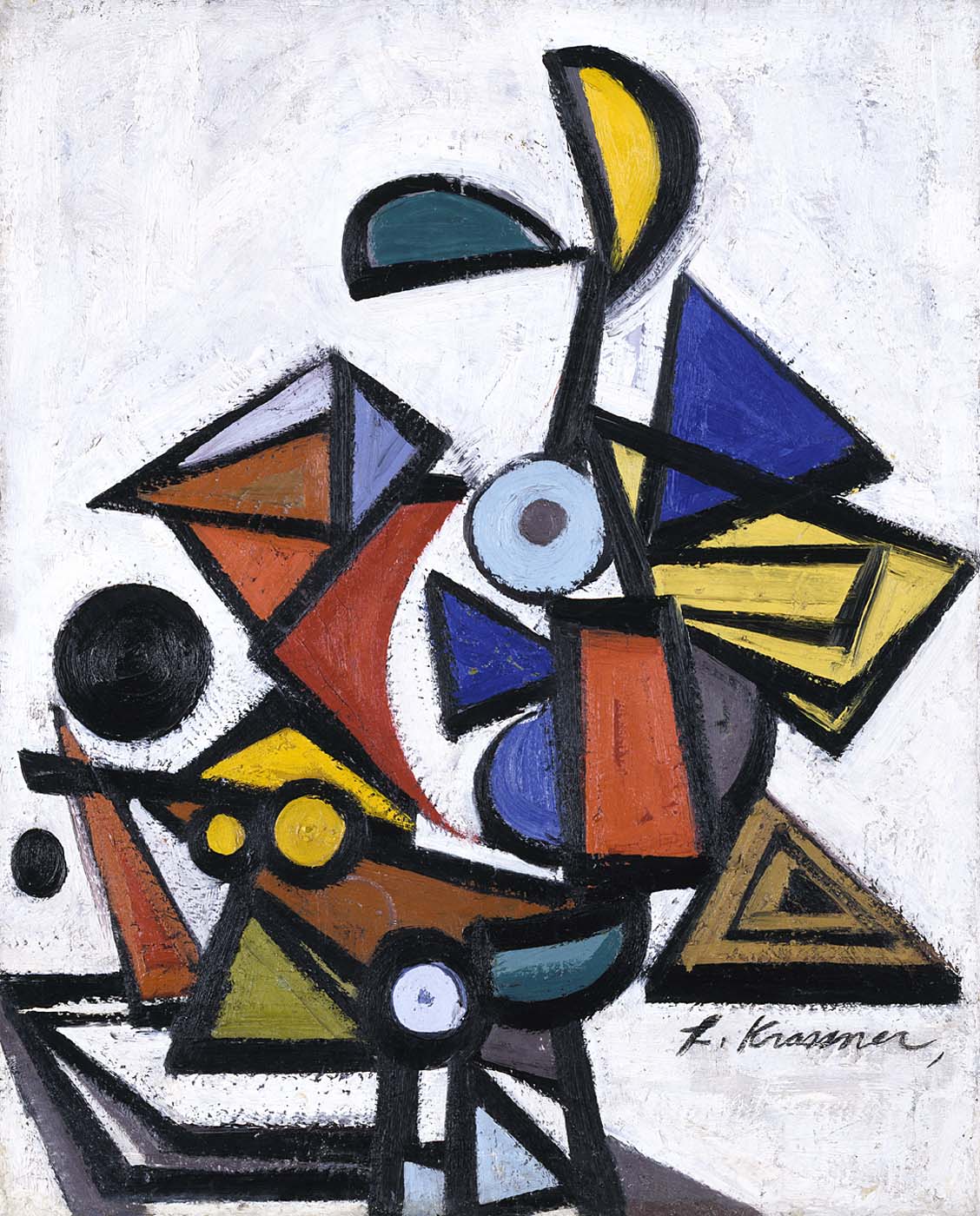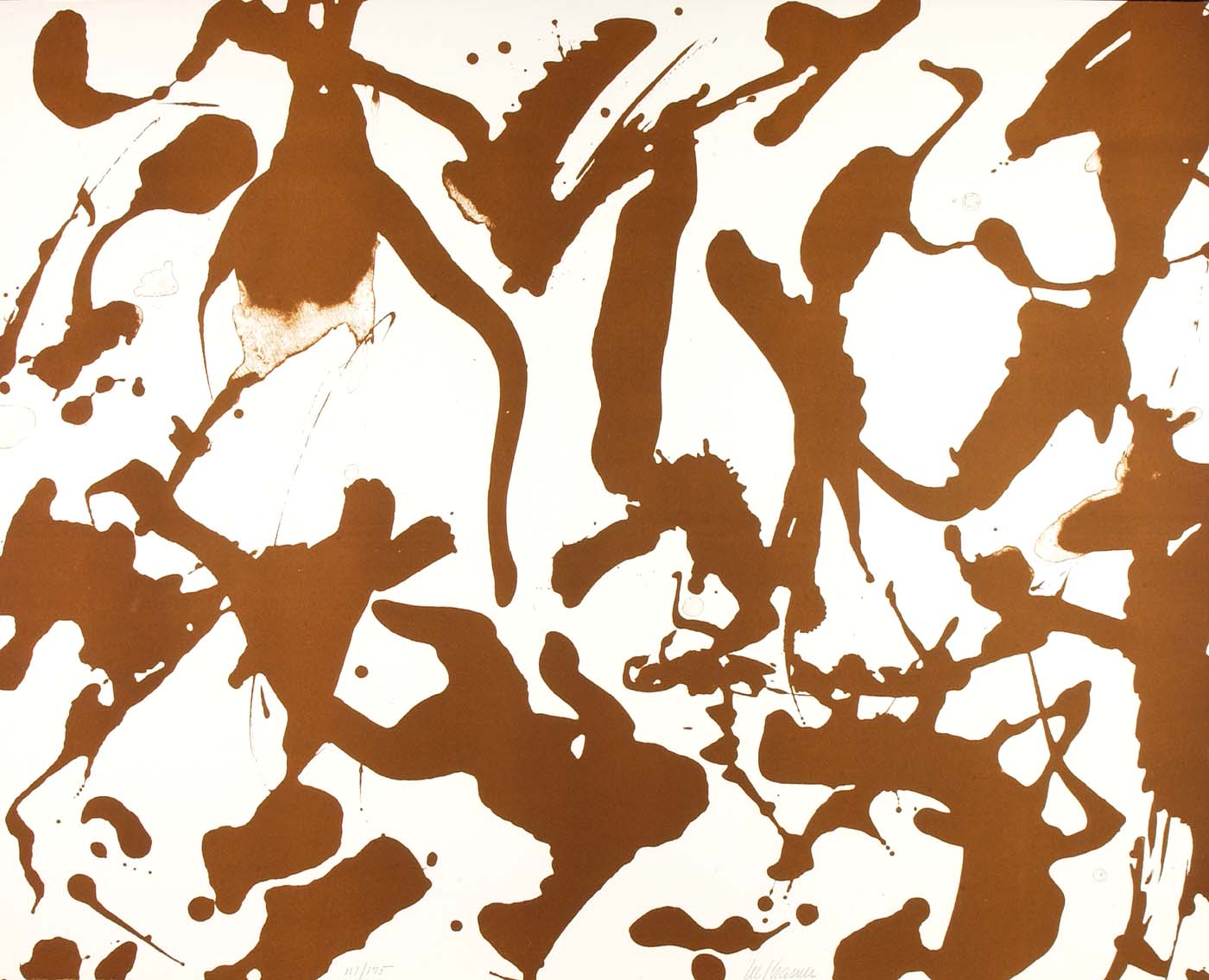Lee Krasner
Born Lenore Krassner, Lee Krasner decided at an early age that she wanted to be an artist. She attended several prestigious New York art schools in the late 1920s, and it was through study with modernist Hans Hofmann that Krasner developed her unique abstract style. Around the same time, Krasner saw the works of European artists Henri Matisse, Piet Mondrian, and Pablo Picasso, whom she often referred to when speaking about her work. She met her future husband, Jackson Pollock, when they participated in the 1942 exhibition "French and American Paintings" at McMillen Gallery, in New York. The show paired American artists Pollock, Krasner, Willem de Kooning, Walter Kuhn, and Stuart Davis with European artists Picasso, Modigliani, Braque, and Matisse, among others. Critically well received, the exhibit was a groundbreaking event for contemporary American art.
Krasner struggled to create art for several years following her marriage to Pollock, saying that she went "through a kind of black-out period or a painting of nothing but gray building up." She experienced renewed success with what she called her "little paintings," which resembled hieroglyphics, and a series of painted collages in which she used discarded works, often by Pollock. After her husband's sudden death in 1956, Krasner began making large-scale expressive abstractions and continued to paint until her death in 1984. Although her artistic achievements were often overlooked because of her gender, or overshadowed by her famous husband, Krasner is now regarded as an integral figure in the postmodern art movement in the United States. (Archives of American Art, Smithsonian Institution)
Objects at Smithsonian American Art Museum (2)
Objects at Indianapolis Museum of Art at Newfields (6)
Objects at Archives of American Art (26)








